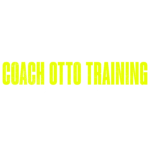High Jump Training Calendar: Introduction
The art and science of high jumping demands more than natural talent—it requires methodical planning, consistent training, and strategic progression throughout the year. For athletes aiming to reach new heights (literally), a carefully structured year-round training calendar isn’t just beneficial—it’s essential.
High jumping combines explosive power, technical precision, and mental fortitude. These elements don’t develop overnight or through haphazard training approaches. Rather, they emerge through deliberate practice patterns and thoughtful periodization strategies that build upon each other throughout the annual cycle.
Whether you’re a high school athlete looking to break school records, a collegiate jumper aiming for conference titles, or an elite competitor with international aspirations, your success hinges on how effectively you structure your training year. This comprehensive guide presents a holistic approach to high jump training that balances intense technical work with appropriate recovery, strength development with skill refinement, and competition readiness with long-term progression.
By implementing the periodization strategies, strength and conditioning protocols, technical development approaches, and recovery tactics outlined in this article, you’ll create a sustainable pathway to improved performance. Let’s explore how to design your optimal year-round high jump training calendar to ensure consistent athletic growth and peak performance when it matters most.
High Jump Training Calendar: Structured Periodization for Consistent Progress
The foundation of any successful high jump training program lies in methodical periodization—the systematic planning of athletic training to reach peak performance at predetermined times. For high jumpers, proper periodization prevents plateaus, reduces injury risks, and ensures continual progress throughout the annual training cycle.
Periodization doesn’t just happen; it requires careful planning that accounts for your competition schedule, current physical abilities, technical proficiency, and long-term development needs. The traditional model for high jump periodization divides the training year into three primary phases: preparation, competition, and transition.
The preparation phase typically spans 4-6 months and forms the bedrock of your annual progression. During this period, focus shifts toward building general physical preparation (GPP) through higher volume, lower intensity training. Early preparation emphasizes strengthening the posterior chain, developing core stability, and improving overall athleticism. As you advance through this phase, training gradually becomes more specific to high jump demands, incorporating more technical drills and event-specific exercises while maintaining the strength foundation.
As competition season approaches, training transitions into the pre-competition phase where intensity increases while volume decreases. Here, the emphasis shifts toward neurological adaptation and technical refinement. Jumping sessions become more event-specific with approach run practice, takeoff mechanics, and bar clearance techniques receiving priority attention.
The competition phase represents the culmination of your preparation efforts. During this period, which typically spans 3-4 months, training volume decreases significantly while intensity remains high. Technical sessions focus on maintaining optimal form rather than introducing new elements. Strength training shifts toward maintenance and power development rather than hypertrophy or maximal strength. Most importantly, this phase incorporates strategic tapers before key competitions to ensure peak performance when it matters most.
Following the competitive season, a transition phase of 3-4 weeks allows for physical and mental recovery. This isn’t complete inactivity but rather active recovery through alternative activities that maintain fitness while giving high-jump-specific muscles and movements a break.
Within this annual framework, further structure comes through macro cycles (spanning several months), mesocycles (typically 3-6 weeks), and microcycles (usually weekly training units). This nested approach allows for progressive training loads that build upon previous adaptations while preventing overtraining. By tracking performance metrics across these cycles, you can make data-informed adjustments to optimize your high jumper annual training progression.
- Divide the year into distinct phases: preparation, competition, and transition.
- Adjust training focus in each phase to align with performance goals and recovery needs.
- Incorporate macro, meso, and micro cycles to manage long-term and short-term objectives.
High Jump Training Calendar: Comprehensive Strength and Conditioning Programs
While technical mastery remains crucial in high jump, your physical capabilities ultimately determine how effectively you can execute those techniques. A comprehensive strength and conditioning program tailored specifically for high jump demands forms the second pillar of year-round training success.
High jump requires a unique blend of strength qualities: explosive power for takeoff, elastic strength for energy transfer, core stability for midair positions, and general strength for injury prevention. Your annual strength progression should methodically develop each of these qualities at appropriate times within your periodization schedule.
During the early general preparation phase, emphasize building maximal strength through compound movements. Lower body strength development through squats (both back and front variations), deadlifts, and Bulgarian split squats establishes the foundation for later power development. Initial strength cycles might focus on hypertrophy (8-12 repetitions) before progressing to maximal strength protocols (3-6 repetitions) as the preparation phase advances. Aim for progressive overload while maintaining proper form—especially important for preventing knee valgus during landing and takeoff mechanics.
As you progress toward the pre-competition phase, transition toward more power-oriented training. Olympic lifting derivatives like power cleans, hang cleans, and snatch pulls develop the explosive triple extension pattern critical for effective takeoff. These movements train the body to generate force quickly—a fundamental requirement for successful high jumping. Concurrently, integrate sport-specific plyometric work such as depth jumps, box jumps, and bounding exercises to enhance the elastic qualities needed for efficient energy transfer during takeoff.
Core training remains essential year-round but should evolve in specificity. Early preparation might focus on anti-rotation exercises like Pallof presses and plank variations, while later phases should incorporate more dynamic core movements that mimic the positions encountered during the Fosbury flop technique. Medicine ball exercises that train rotational power are particularly valuable for high jumpers.
Upper body strength, while secondary to lower body development, shouldn’t be neglected. The arms play a crucial role in generating momentum during the approach and takeoff phases. Pull-ups, rows, and pressing movements develop balanced upper body strength that contributes to overall jumping efficiency.
As the competition season approaches, strength training volume decreases while specificity increases. Sessions become shorter but more intense, maintaining power and maximal strength while allowing greater recovery between sessions. During the competitive phase itself, strength training shifts to maintenance protocols—typically 1-2 weekly sessions focused on preserving adaptations rather than creating new ones.
Throughout the annual cycle, mobility work targeting the ankle, hip, and thoracic spine should be integrated into warm-ups and recovery sessions. These joints require both stability and mobility for optimal high jump performance and injury prevention.
- Focus on lower body strength exercises such as squats, lunges, and deadlifts to improve power.
- Incorporate plyometric training to enhance explosive strength and jumping ability.
- Maintain core stability and upper body strength to support technical movements.
High Jump Training Calendar: Technical Skill Development and Refinement
High jump success ultimately depends on technical mastery—the ability to transform physical capabilities into efficient bar clearance. Technical development follows its own progression within the annual training cycle, with emphasis shifting from fundamental mechanics to performance refinement as competitions approach.
During the general preparation phase, technical training focuses on fundamental movement patterns rather than complete jumps. Breaking down the high jump into component parts allows for focused improvement without the physical demands of full approach jumps. Key technical elements to address include:
Approach run: The foundation of successful high jumping begins with a consistent, rhythmic approach. Early-season work should establish proper posture, arm action, and acceleration patterns using straight-line runs before introducing the curved J-approach. Practice maintaining proper posture throughout the curve, gradually increasing speed as technical proficiency improves. Use checkmarks to ensure consistency, and consider filming sessions to track progress in stride length, frequency, and body positioning.
Takeoff mechanics: Perhaps the most critical technical element, takeoff development should progress from static drills to short approach work before integrating with the full approach. Focus on developing a quick penultimate step, proper plant foot positioning (typically 60-70% of body height from the bar), and efficient arm drive. Specific drills like penultimate step practice, scissor jumps over low heights, and imitation exercises help isolate and refine these crucial movements.
Bar clearance: The Fosbury Flop technique requires specialized drills to develop the body awareness needed for efficient clearance. Back arching exercises on gymnastics mats, visualization drills, and standing jumps focusing on hip position and lead leg mechanics build the movement patterns required for successful bar clearance.
As technical proficiency improves through the preparation phase, gradually integrate these elements into complete jumps. Begin with shorter approaches (3-5 steps) at lower heights before progressing to medium approaches (5-7 steps) and eventually full approaches (8-10 steps) as pre-competition phase begins.
The pre-competition phase emphasizes technical consistency rather than major changes. Use video analysis to identify inefficiencies and implement targeted corrections. This period represents the final opportunity to address technical flaws before competition season, so focus on refinements rather than wholesale changes.
During competition season, technical training shifts toward maintenance and minor adjustments. Full technical sessions decrease in frequency but maintain high quality, often using lower heights to reduce physical demands while preserving movement patterns. Technical cues become simplified, focusing on 1-2 key elements per session to avoid mental overload during competitive periods.
Year-round technical development should include regular video analysis comparing current techniques against ideal models. Many elite jumpers review film weekly, creating a feedback loop that guides technical sessions. Developing a technical progression that builds systematically throughout the year ensures that physical capabilities translate into improved jumping performance.
- Regularly practice the approach run to ensure proper speed and rhythm.
- Focus on the takeoff mechanics to optimize height and form.
- Engage in video analysis to identify and correct technical flaws.
High Jump Training Calendar: Conclusion
Creating a truly effective year-round training calendar for high jump requires more than just collecting exercises or following generic programs—it demands a thoughtful integration of periodization principles, strength development, technical refinement, and recovery strategies into a cohesive system tailored to your individual needs and competition schedule.
The most successful high jumpers understand that progress doesn’t occur in straight lines but through carefully planned cycles of stress and adaptation. By implementing the principles outlined in this article, you create the conditions for consistent athletic development rather than hoping for random breakthrough performances.
Remember that this annual training framework should evolve as you progress through your high jump career. What works for a developing jumper differs from what an elite athlete requires. Regularly reassess your needs, strengths, and limitations to adjust your training calendar accordingly.
Track your progress not just in bar clearance heights but in the underlying physical qualities and technical proficiencies that drive performance. Improvements in approach consistency, takeoff mechanics, and strength metrics often precede jumps in competition performance.
Perhaps most importantly, maintain perspective throughout your annual training journey. There will be periods of rapid improvement and frustrating plateaus. Trust in the process, adjust when necessary, and remember that high jump development occurs over years, not weeks or months.
By embracing a comprehensive, year-round approach to high jump training that balances structured periodization, targeted strength development, technical mastery, and strategic recovery, you create the foundation for sustained athletic growth and breakthrough performances when they matter most. Your path to new personal bests begins not on competition day but in the methodical planning and execution of your annual training calendar.
Coach Otto is a certified track and field coach with over 15 years of experience working with high jumpers at high school, collegiate, and elite levels.

